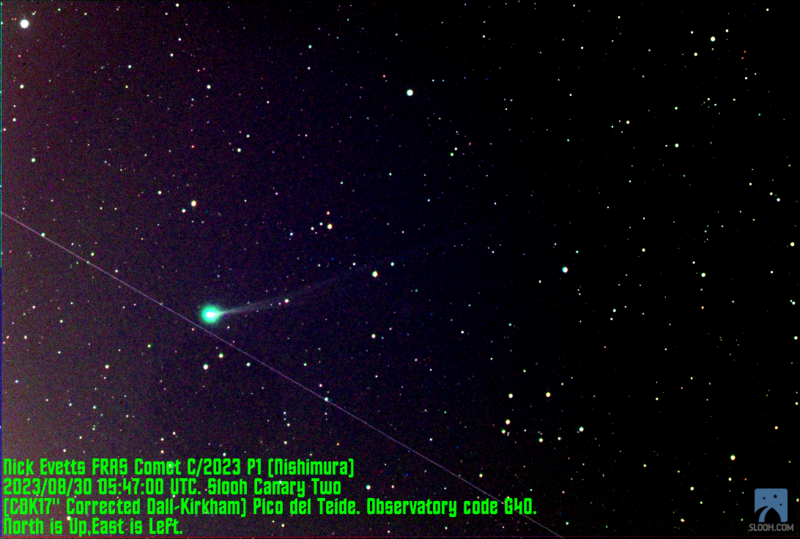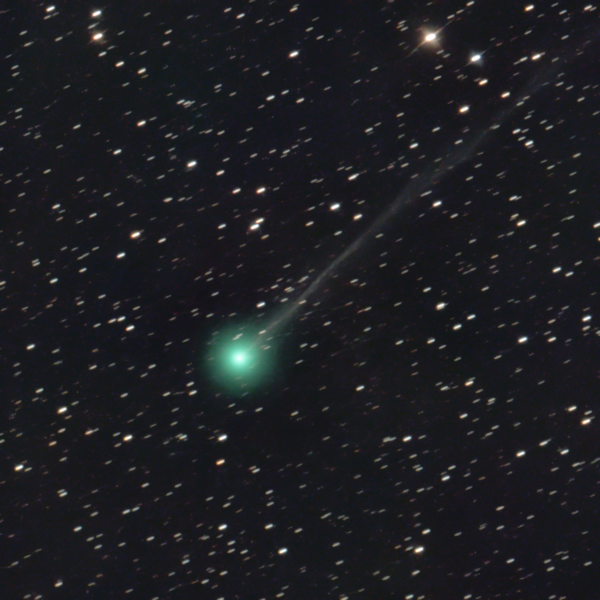Comet Nishimura: A Unique Celestial Phenomenon This Week
Written on
Chapter 1: The Discovery of Comet Nishimura
Just a month ago, the world was introduced to Comet Nishimura, which is now best viewed from the northern hemisphere.

[Photo: Alex Liang, CC BY-SA 4.0, via Wikimedia Commons]
Celestial discoveries are increasingly rare, and most new comets are identified through professional telescopes, like those in the Pan-STARRS program, which has been surveying the skies for over thirteen years. However, Hideo Nishimura, an amateur astronomer from Kakegawa, Japan, had the remarkable fortune of spotting this comet with a simple Canon DSLR camera on August 11, 2023.
In the weeks since, astronomers, astrophotographers, and comet fans worldwide have been monitoring Nishimura, named in honor of its discoverer. This week offers the best opportunity for amateur observers, as the comet may become visible to the naked eye.
Section 1.1: Comet's Scientific Profile
The comet's official designation is C/2023 P1. It consists of a mix of ice and rock, although its exact dimensions remain unidentified. Currently, it is on a trajectory that brings it closest to Earth on September 12 and nearest to the Sun on September 17. Nishimura traverses the constellation Leo, situated near the Big Dipper.
As noted by Nicolas Biver, an astronomer at the Paris Observatory and quoted by phys.org, it is uncommon for a comet to reach peak visibility so soon after its discovery. “Typically, comets are identified months or even years before they approach the Sun,” Biver explains.

[Photo: Nick 20LUN, CC BY-SA 2.0, via Wikimedia Commons]
Section 1.2: How to View Nishimura
The optimal time to observe Nishimura is this week, until September 17. To catch a glimpse, viewers should rise early before dawn. Biver recommends looking in the northeast, to the left of Venus. Clear skies, clean air, and minimal artificial light will enhance visibility.
Under these ideal conditions, it is possible to see Nishimura without equipment. However, binoculars or small telescopes will offer a better view of the comet’s “coma,” which appears as a greenish, fuzzy orb. More advanced equipment can reveal the comet’s tail.

[Photo: SomeAstroStuff, CC BY-SA 4.0, via Wikimedia Commons]
Chapter 2: A Rare Celestial Opportunity
Such a phenomenon is unlikely to recur within our lifetimes. The next time C/2023 P1 makes its way back to the inner Solar System will be in 437 years. For most of its journey, Nishimura remains distant from the Sun, where frigid temperatures keep its core intact.
As it nears the Sun, the icy core transforms into gas and dust, producing a long, radiant tail that is visible from Earth when illuminated by sunlight. Astrophotographers have been capturing stunning images of Nishimura, including photographs by Michael Jäger, shared on the X platform (formerly Twitter), showcasing the glowing coma and tail.
Nishimura will safely pass Earth at a distance of 125 million kilometers, followed by a close approach to the Sun at 33 million kilometers before retreating into the outer reaches of the Solar System.
The first video titled "Comet Nishimura: 'Once in a lifetime' sight or just more media hype?" explores the significance of this celestial event and its visual appeal.
The second video, "2023 September 11 - Beautiful Comet Nishimura," captures breathtaking visuals of the comet, highlighting its beauty in the night sky.
Bizarre Golden Sphere Found Deep in the Ocean — Is It the Enigma of a Sea Monster’s Egg?
Off the coast of Alaska, scientists discovered a strange golden sphere at a depth exceeding 3 kilometers underwater.
Attention all readers!
As content creators on Medium.com, we face minimal compensation for our hard work. If you find value in my articles, please consider supporting me on my “Buy Me a Coffee” page. Your small contributions can make a big difference in fueling my passion for creating quality content. Thank you for your support!

